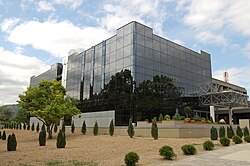
The Socialist Republic of Macedonia, or SR Macedonia, commonly referred to as Socialist Macedonia, Yugoslav Macedonia or simply Macedonia, was one of the six constituent republics of the post-World War II Socialist Federal Republic of Yugoslavia, and a nation state of the Macedonians. After the transition of the political system to parliamentary democracy in 1990, the Republic changed its official name to Republic of Macedonia in 1991, and with the beginning of the breakup of Yugoslavia, it declared itself an independent country and held a referendum on 8 September 1991 on which a sovereign and independent state of Macedonia, with a right to enter into any alliance with sovereign states of Yugoslavia was approved.
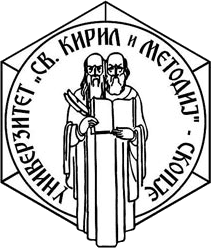
The Saints Cyril and Methodius University is a public research university in Skopje, North Macedonia. It is the oldest and largest public university in the country. It is named after the Byzantine Christian theologians and missionaries Cyril and Methodius. As of 2018–19 school year, a total of 25,220 students are enrolled at the university. Furthermore, the teaching and research staff number 2,390 people; this is further supported by over 300 members in the university's institutions.
COBISS is an organizational model of joining libraries into a national library information system with shared cataloguing, the COBIB union bibliographic catalogue database and local bibliographic databases of participating libraries, the COLIB database on libraries, the CONOR authority database, and with a number of other functions.
The Anti-fascist Assembly for the National Liberation of Macedonia was the supreme legislative and executive people's representative body of the communist Macedonian state from August 1944 until the end of World War II. The body was set up by the Macedonian Partisans during the final stages of the World War II in Yugoslav Macedonia. That occurred clandestinely in August 1944, in the Bulgarian occupation zone of Yugoslavia. Simultaneously another state was declared by pro-Nazi Germany Macedonian right-wing nationalists.
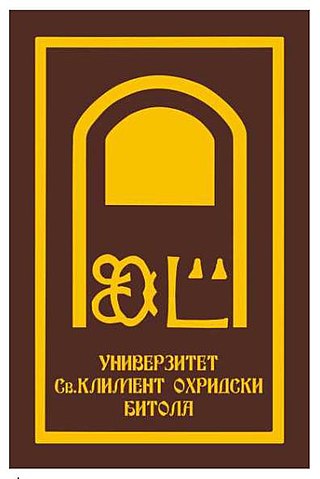
The University St. Kliment Ohridski in Bitola is a public university in North Macedonia. Headquartered in Bitola, it also has faculties in Prilep, Ohrid, Veles, Kichevo and Skopje. It was founded on 25 April 1979, but the name of St. Clement of Ohrid was not given until late 1994. As of 2018–19 school year, a total of 4,139 students are enrolled at the university.
Michael was an Archbishop of Ohrid and Macedonia. He established the first Macedonian Orthodox parish outside Yugoslavia.
The Bloody Christmas or the Bloody Bozhik was a campaign in which several hundred people of Macedonian Bulgarian descent were killed as collaborationists by the Yugoslav communist authorities in the Socialist Republic of Macedonia from 7 to 9 January 1945. Thousands of others who retained their pro-Bulgarian sympathies or views, suffered severe repression as a result. However many people accused of pro-Bulgarian orientation,, were also arrested, sentenced on fabricated charges and imprisoned.
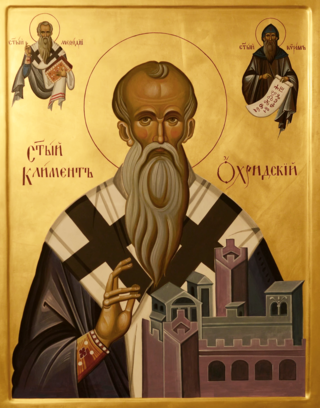
Saint Clementof Ohrid was one of the first medieval Bulgarian saints, scholar, writer, and apostle to the Slavs. He was one of the most prominent disciples of Cyril and Methodius and is often associated with the creation of the Glagolitic and Cyrillic scripts, especially their popularisation among Christianised Slavs. He was the founder of the Ohrid Literary School and is regarded as a patron of education and language by some Slavic people. He is considered to be the first bishop of the Bulgarian Orthodox Church, one of the Seven Apostles of Bulgarian Orthodox Church since the 10th century, and one of the premier saints of modern Bulgaria. The mission of Clement was the crucial factor which transformed the Slavs in then Kutmichevitsa into Bulgarians. Clement is also the patron saint of North Macedonia, the city of Ohrid and the Macedonian Orthodox Church.

Zharko Basheski is a Macedonian sculptor and professor in the Sculpture Department at the Faculty of Fine Arts in Skopje. His work falls under the hyperrealism movement, with a specific focus on the human body.

Georgi Konstantinovski was a Macedonian architect, writer and educator. He graduated from the SS Cyril and Methodius University, Faculty of Architecture in Skopje in 1956 and received his Master of Architecture Degree from Yale University, under the mentorship of Paul Rudolph and Serge Chermayeff, in 1965. His early works are stylistically considered Brutalist. In New York City, he worked and collaborated with I. M. Pei, Henry Cobb Jr., and Araldo Cossutta.
Rubens Korubin is an artist based in Skopje.

Slavko Brezoski was a Macedonian architect, urban planner, painter, writer and educator known for his works in the genre of modern architecture realised during the middle of the 20th Century in North Macedonia, Serbia, Croatia, Brazil and Libya. He was professor and Dean at the Faculty of Architecture at the Ss. Cyril and Methodius University of Skopje.

Health in North Macedonia is improving. The Macedonian life expectancy in 2016 was 74 for men and 78 for women. In 2015 it was estimated that 11.44% of the Macedonian population had diabetes, costing about $403 per person per year. In 2015 it had the fourth highest rate of death from non-communicable diseases in Europe.

The State Archives of the Republic of North Macedonia, formerly known as the State Archives of the Republic of Macedonia (DARM) are the national archives of North Macedonia. It is located in Skopje in North Macedonia.
Tomislav Zografski was a Macedonian composer and music pedagogue who also wrote music for film and television. His neoclassical language played a key part in the journey of Macedonian music toward the postmodern era. Zografski's musical language was not archetypal of neoclassical folklore-inspired pastiche but instead more the result of him venturing into the examination and development of more exemplar traditional repertoire in a way that was unconventional and compelling and which retained transformed elements from an earlier period.

Ivan Čapovski is a Macedonian writer, poet and novelist. Macedonian: Иван Чаповски; also Ivan Čapovski; Capovskǐ, Ivan; Čapovski, Ivan 1936-; Ivan Čapovski Macedonian writer; Чаповски Иван 1936-; Иван Чаповски.

Sofija Grandakovska is an academic, poet and author in the field of comparative literature studies and interdisciplinary studies in Holocaust, Jewish history, literature and culture, with a specialization in the Jewish and Holocaust history in the Balkans. Another area of interest is Byzantine studies. She has significant publications in literary and visual semiotics, literary theory, critics and interpretation and art.

The House of Slavko Brezovski is a historical house in Galičnik that is listed as Cultural heritage of North Macedonia. It is in ownership of one branch of the family of Brezoski.
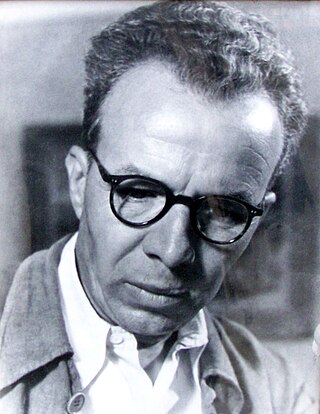
Emanuel Hristov Čučkov also known as Mane Čučkov was a Macedonian statesman, partisan, author and professor.
Saint Kliment, Sveti Kliment, or Sv. Kliment is the Bulgarian, Macedonian, Serbian, and Slovak form of the name "Saint Clement", particularly in reference to Saint Kliment of Ohrid.
